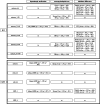Deepening the decisional processes under value-based conditions in patients affected by Parkinson's disease: A comparative study
- PMID: 39266937
- PMCID: PMC11525292
- DOI: 10.3758/s13415-024-01211-x
Deepening the decisional processes under value-based conditions in patients affected by Parkinson's disease: A comparative study
Abstract
Patients affected by Parkinson's disease (PD) display a tendency toward making risky choices in value-based conditions. Possible causes may encompass the pathophysiologic characteristics of PD that affect neural structures pivotal for decision making (DM) and the dopaminergic medications that may bias choices. Nevertheless, excluding patients with concurrent impulse control disorders, results are few and mixed. Conversely, other factors, such as individual differences (e.g., emotional state, impulsivity, consideration for future consequences) and cognitive functioning, in particular executive functions (EFs), are involved, even though few studies investigated their possible role. The present study investigated (1) the differences in value-based DM between 33 patients with PD without impulse control disorders and 33 matched healthy controls, and (2) the relationships among decisional performances, EFs, and individual differences in a group of 42 patients with PD who regularly undertake dopaminergic medications. All participants underwent an individual assessment to investigate value-based DM, cognitive abilities, and individual differences associated with DM. Nonparametric analyses showed the presence of riskier decisions in patients compared with healthy controls, depending on the characteristics of the decisional situation. Moreover, parameters of the decisional tasks involving the number of risky choices were significantly related to the posology of dopaminergic medications, EFs, and individual differences. Findings were discussed, highlighting possible clinical implications.
Keywords: Decision making; Dopamine; Executive functions; Game of Dice Task; Iowa Gambling Task; Parkinson’s disease.
© 2024. The Author(s).
Conflict of interest statement
The authors have no competing interests to declare that are relevant to the content of this article.
Figures


Similar articles
-
Decision-making under ambiguity and risk and executive functions in Parkinson's disease patients: A scoping review of the studies investigating the Iowa Gambling Task and the Game of Dice.Cogn Affect Behav Neurosci. 2023 Oct;23(5):1225-1243. doi: 10.3758/s13415-023-01106-3. Epub 2023 May 17. Cogn Affect Behav Neurosci. 2023. PMID: 37198383 Free PMC article.
-
Dissociation of decision-making under ambiguity and decision-making under risk in patients with Parkinson's disease: a neuropsychological and psychophysiological study.Neuropsychologia. 2009 Nov;47(13):2882-90. doi: 10.1016/j.neuropsychologia.2009.06.014. Epub 2009 Jun 21. Neuropsychologia. 2009. PMID: 19545579 Clinical Trial.
-
Dissociation between decision making under ambiguity and risk in patients with juvenile myoclonic epilepsy.Epilepsy Behav. 2019 Dec;101(Pt A):106548. doi: 10.1016/j.yebeh.2019.106548. Epub 2019 Oct 31. Epilepsy Behav. 2019. PMID: 31678809
-
Iowa gambling task in Parkinson's disease.J Clin Exp Neuropsychol. 2011 Apr;33(4):395-409. doi: 10.1080/13803395.2010.524150. Epub 2010 Dec 6. J Clin Exp Neuropsychol. 2011. PMID: 21140314
-
Decision making in Parkinson's disease: An analysis of the studies using the Iowa Gambling Task.Eur J Neurosci. 2021 Nov;54(10):7513-7549. doi: 10.1111/ejn.15497. Epub 2021 Nov 9. Eur J Neurosci. 2021. PMID: 34655122 Free PMC article. Review.
Cited by
-
The effect of transcranial Direct Current Stimulation on the Iowa Gambling Task: a scoping review.Front Psychol. 2024 Dec 18;15:1454796. doi: 10.3389/fpsyg.2024.1454796. eCollection 2024. Front Psychol. 2024. PMID: 39744021 Free PMC article.
References
-
- Alexander, G. E., DeLong, M. R., & Strick, P. L. (1986). Parallel organization of functionally segregated circuits linking basal ganglia and cortex. Annual Review of Neuroscience,9(1), 357–381. - PubMed
-
- Antonietti, A., Colautti, L., & Iannello, P. (2023). Livelli di inibizione della risposta e comportamenti funzionali nella vita quotidiana. Giornale Italiano Di Psicologia,50(1), 37–144. 10.1421/106926
-
- Argyelan, M., Herzallah, M., Sako, W., DeLucia, I., Sarpal, D., Vo, A., ... & Gluck, M. (2018). Dopamine modulates striatal response to reward and punishment in patients with Parkinson’s disease: A pharmacological challenge fMRI study. Neuroreport, 29(7), 532. 10.1097/WNR.0000000000000970 - PMC - PubMed
-
- Balestrino, R., & Schapira, A. H. V. (2020). Parkinson disease. European Journal of Neurology,27(1), 27–42. 10.1111/ene.14108 - PubMed
-
- Bagby, R. M., Parker, J. D., & Taylor, G. J. (1994). The twenty-item Toronto Alexithymia Scale—I. Item selection and cross-validation of the factor structure. Journal of Psychosomatic Research, 38(1), 23–32. 10.1016/0022-3999(94)90005-1 - PubMed
Sitography
-
- Colautti, L., Iannello, P., & Antonietti, A. (2023b). The drawn lots task. Retrieved from September 14, 2023. https://osf.io/cpjh4/?view_only=23bef8d21ee84b78a35d416e80803437
Publication types
MeSH terms
LinkOut - more resources
Full Text Sources
Medical

